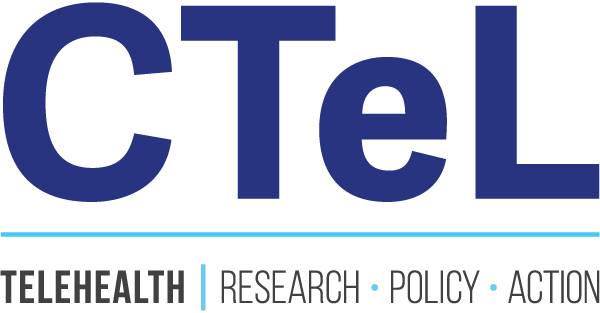From Testimony to Transformation: 3 Steps Congress Must Take for a Digital Health Future
The future of healthcare is at a pivotal juncture. As patients, providers, and innovators increasingly turn to digital tools, the policies that govern our health systems must evolve. Following the recent House Ways & Means Subcommittee on Health hearing, "Health at Your Fingertips: Harnessing the Power of Digital Health Data," the Center for Telehealth and eHealth Law (CTeL) has outlined a clear, three-pronged approach for Congress to unlock the full potential of a digital, data-driven, and personalized healthcare landscape.
The message is clear: to harness the power of digital health, we need a permanent and modern policy framework. The temporary, piecemeal measures of the past are no longer sufficient. They create uncertainty that chills investment, widens the equity gap, and leaves groundbreaking health technologies on the sidelines. Here are the three critical areas where legislative action can build a stronger, more connected, and efficient healthcare system for all Americans.
1. End the Uncertainty: Make Telehealth Expansion Permanent
The COVID-19 pandemic forced a rapid and necessary expansion of telehealth services, proving its value and popularity. Then, HHS Secretary Alex Azar used his authority to waive restrictive rules, allowing Medicare beneficiaries to access care from home and enabling more providers to offer virtual services. However, since the end of the Public Health Emergency, these crucial waivers have been kept alive by a series of short-term extensions, with the current one set to expire soon.
This persistent uncertainty is a major roadblock to progress. Healthcare systems face substantial costs to implement and maintain digital health infrastructure. One survey found that initial telehealth setup can cost upwards of $256,460, with annual operating expenses over $1.2 million. Without the assurance of a stable, long-term payment policy from Medicare, hospitals and practices are understandably hesitant to make these significant investments.
The Solution: CTeL urges Congress to permanently extend Medicare's telehealth expansion policies. This includes removing outdated geographic restrictions and broadening the types of providers eligible for reimbursement. A permanent solution would not only secure continuity of care for millions but also foster the investment needed to integrate telehealth with other innovative digital services like wearables and AI.
2. Bridge the Digital Divide: Ensure Every Patient Can Connect
A right to health data is meaningless if a patient cannot access it. Internet connectivity is no longer a luxury; it has become a critical determinant of health. Many digital health services, especially synchronous audio-video telehealth, depend on adequate internet bandwidth, a major barrier for many.
The connectivity gap is twofold:
Broadband Access: Recent FCC data shows millions of Americans may lack the minimum upload speeds required for effective telehealth use.
Data Dependency: A growing number of Americans, particularly those with lower incomes, are "smartphone-only" internet users. These individuals rely on cellular data plans that often come with data caps. Exceeding these caps can lead to extra fees or slowed data speeds, forcing patients to ration their internet use and choose between accessing a telehealth appointment or other essential online activities.
The Solution: Congress must take action to promote patient connectivity. CTeL recommends reinstating the Affordable Connectivity Program to help households with bandwidth and hardware costs. Furthermore, we propose the creation of a "Health Data Lifeline"—a policy that would exempt digital healthcare services from data caps, ensuring patients don't have to sacrifice their health for their data plan. Precedent for this exists; many cellular carriers temporarily waived data caps during the pandemic without significant impacts on network performance.
3. Modernize Medicare Payments: Reimburse for 21st-Century Care
For health systems to fully embrace and for patients to realize the cost-saving potential of technologies like remote monitoring, wearables, and AI, reimbursement models must reflect the true cost of care. Digital health tools come with unique expenses, including significant upfront IT investments and ongoing software and maintenance fees.
Currently, Medicare's payment methodology is out of sync with the realities of digital health delivery. For example, CMS considers crucial costs like per-patient software analysis fees or Software-as-a-Service (SaaS) licenses to be indirect costs, similar to office rent, rather than direct practice expenses. This is inconsistent with how other digital health services are treated and fails to capture the actual cost of providing tech-enabled care.
The Solution: CTeL calls on Congress to ensure Medicare updates its direct practice expense methodology to include the unique software and data connectivity costs associated with modern digital health services. Accurately reflecting these costs in reimbursement codes will improve the return on investment for providers, thereby incentivizing both the adoption of current technologies and the development of new, innovative health solutions.
The Path Forward
The future of healthcare is here, but it requires a modern policy foundation to thrive. By making telehealth flexibilities permanent, closing the digital connectivity gap, and updating reimbursement to reflect the true cost of care, Congress can empower patients, support providers, and foster an environment of innovation.
CTeL welcomes the opportunity to collaborate with lawmakers to support legislative efforts and build a healthcare system that is truly digital, data-driven, and personalized for every American.

